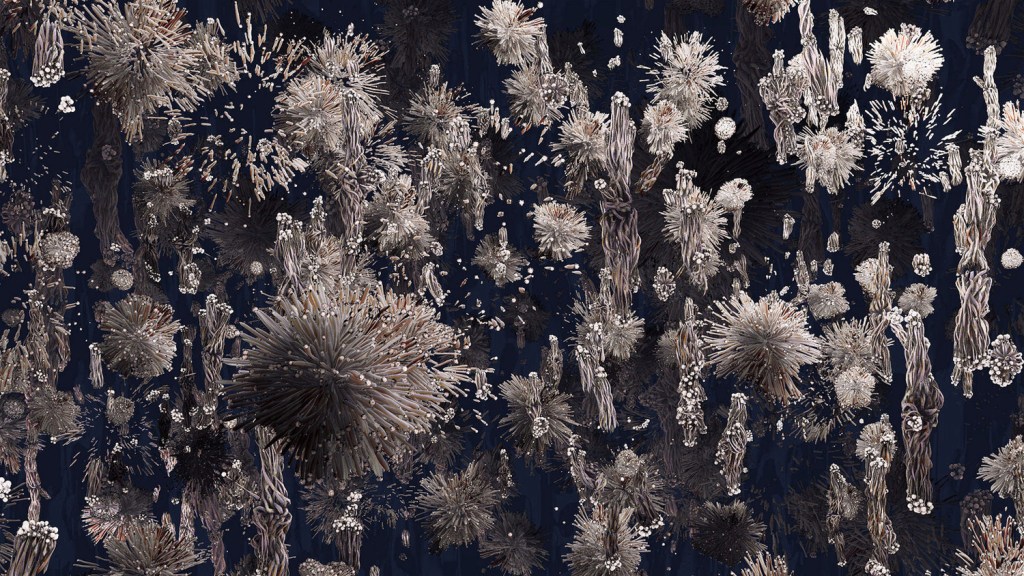When the electron was discovered in 1897, it rocked the world of physics. It was the first elementary particle of many to come and the gateway to those fundamental levels at which we operate and exist. It marked the dawn of the quantum world, and that pivotal moment provides the inspiration for artist Markos Kay‘s new short film Quantum Fluctuations: Experiments in Flux.
Using virtual particle simulations, Kay meticulously renders the patterns and structures of processes at the subatomic level into a kaleidoscope of visuals with an eerie, cinematic soundscape. “For this project in particular, I looked at how scientists observe what happens during a particle collision, which involves measuring the energy of particles on sensors and comparing the findings with data collected from simulations,” Kay tells Creators. “It is perhaps the most indirect method of observation imaginable, a non-representational form of observation mediated by supercomputer simulations.”
Videos by VICE
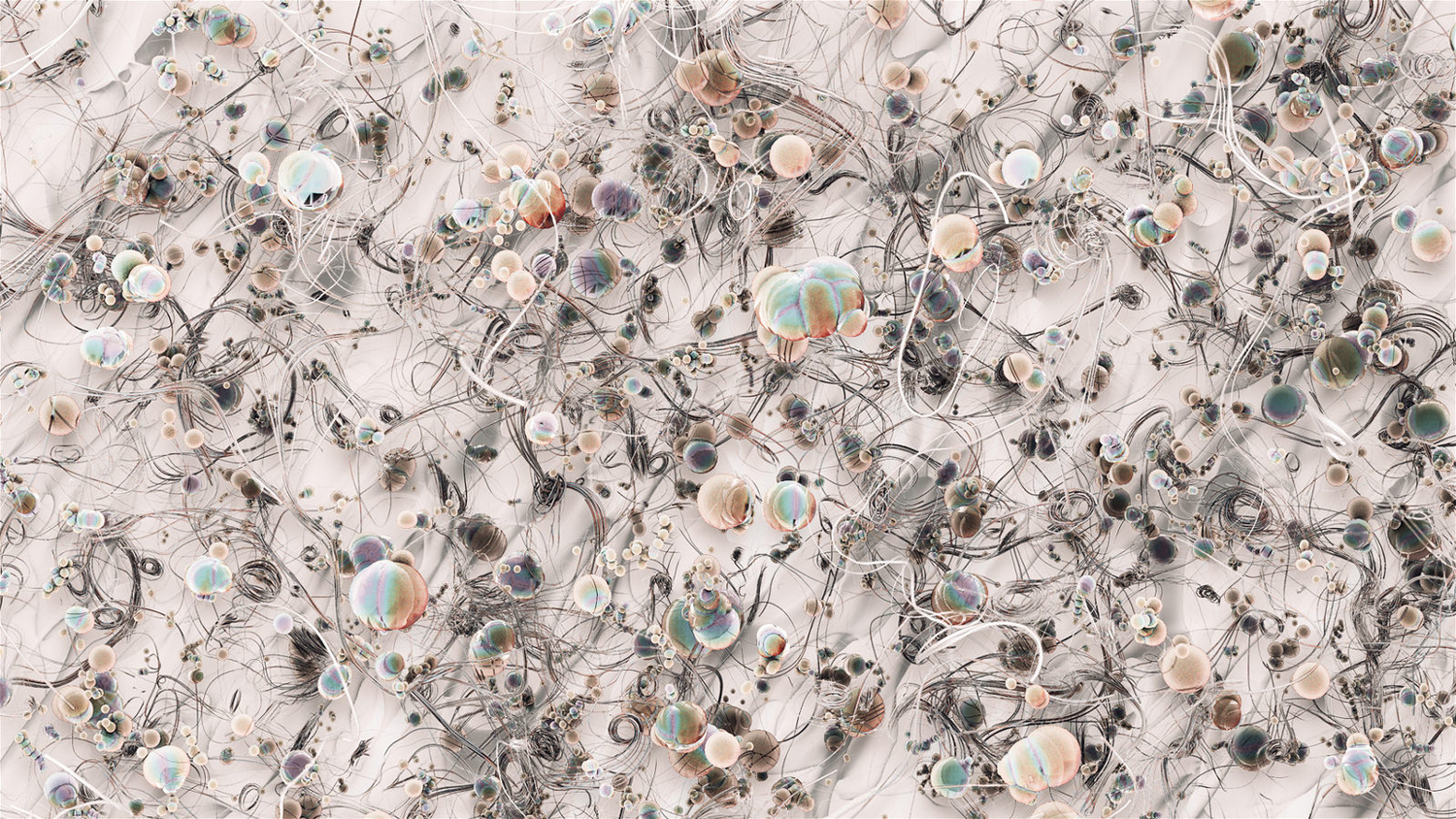
In creating his aesthetic, Kay drew from a wide array of sources, including science textbook iconography and abstract expressionist paintings. His virtual simulations were based in concept to those used at the CERN (and even approved by scientists there), allowing for a unique and innovative conceptual visualization of the infinitesimal interactions that humans can never truly observe. “Creating simulations involves setting initial parameters, such as the properties of the particles,” he says, “and then letting the simulation play out and evolve by itself. This leads to unexpected and often beautiful results that look like they have a life of their own.”
Quantum Fluctuations hypnotically guides the viewer through the various processes of particle physics, each with its own soundscape and color scheme. Particle decay, for example, is marked by dark blues and browns and the somber, solitary echoes of an unanswered satellite signal. Each phase has a distinct purpose within the larger transformative process of particle collisions. “I am particularly interested in the idea of transformation of information which can be seen throughout the scientific narrative,” Kay says of his motivation for the film. “I hope to engage viewers with the complexity and beauty of quantum mechanics and evoke their imagination of what happens behind the scenes of our reality.”
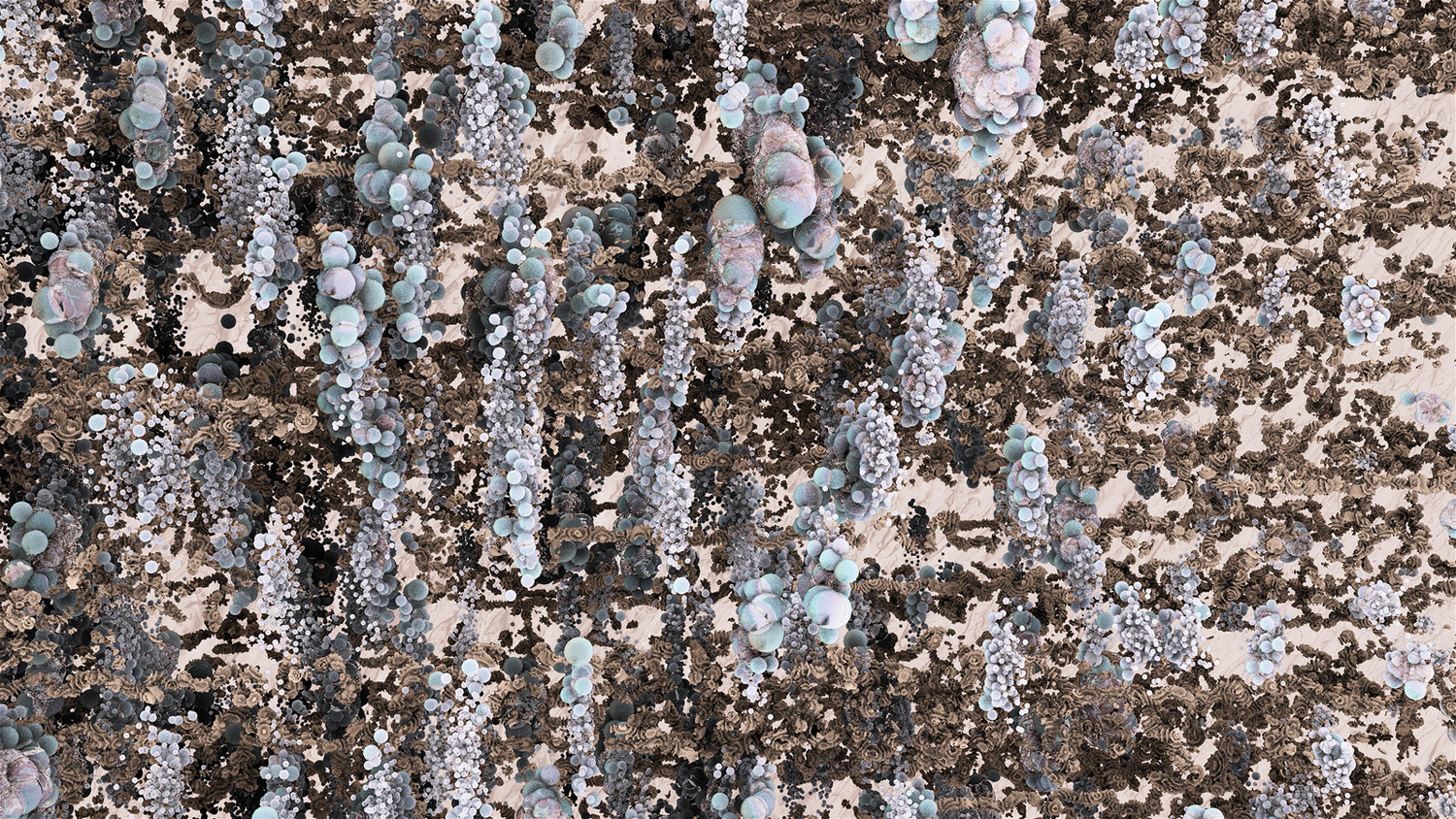
Through the creation of this film and his extensive research, Kay learned that it is impossible to truly visualize quantum interactions. According to him, “they defy our ordinary macrocosmic logic, which is why I believe such knowledge can only be communicated through abstract mathematics and art.” This idea fuels the majority of his work. In 2011 he created the film The Flow that visually interprets the scientific theory behind layers of matter, and he is currently working with photographer Jan Kriwol to combine photographs of urban environments into anatomical renderings of the circulatory system.
Kay’s fastidious approach to research yields conceptual art that challenges its viewers to push the boundaries of what they think they know about the basic functions of our world. With Quantum Fluctuations, he aids in a mind-expanding, visual exploration of the quantum world, a journey that to him, “becomes a deeply philosophical endeavour and in many ways an existential one, dealing with fundamental questions that have a direct impact on how we understand ourselves.”
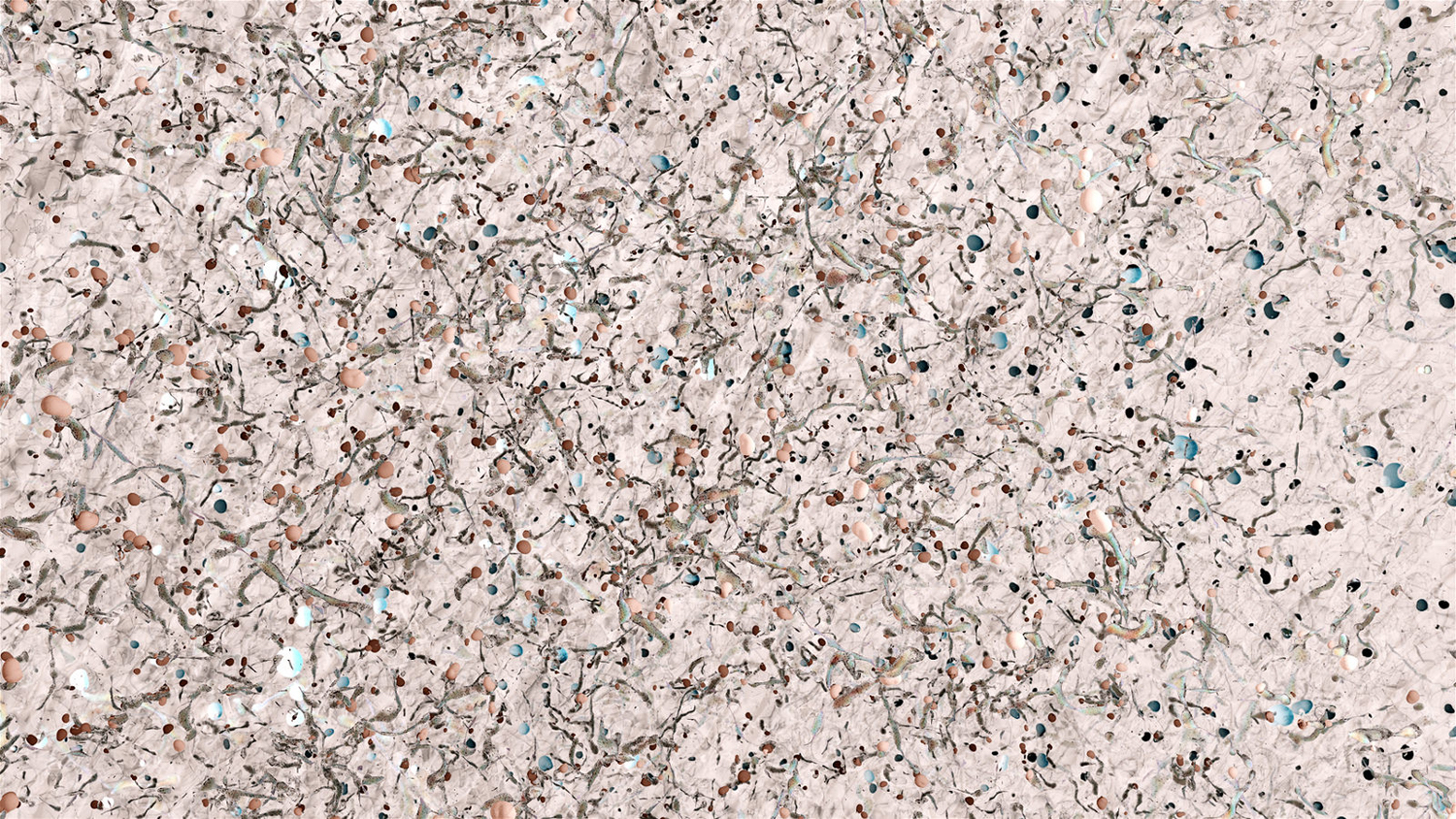
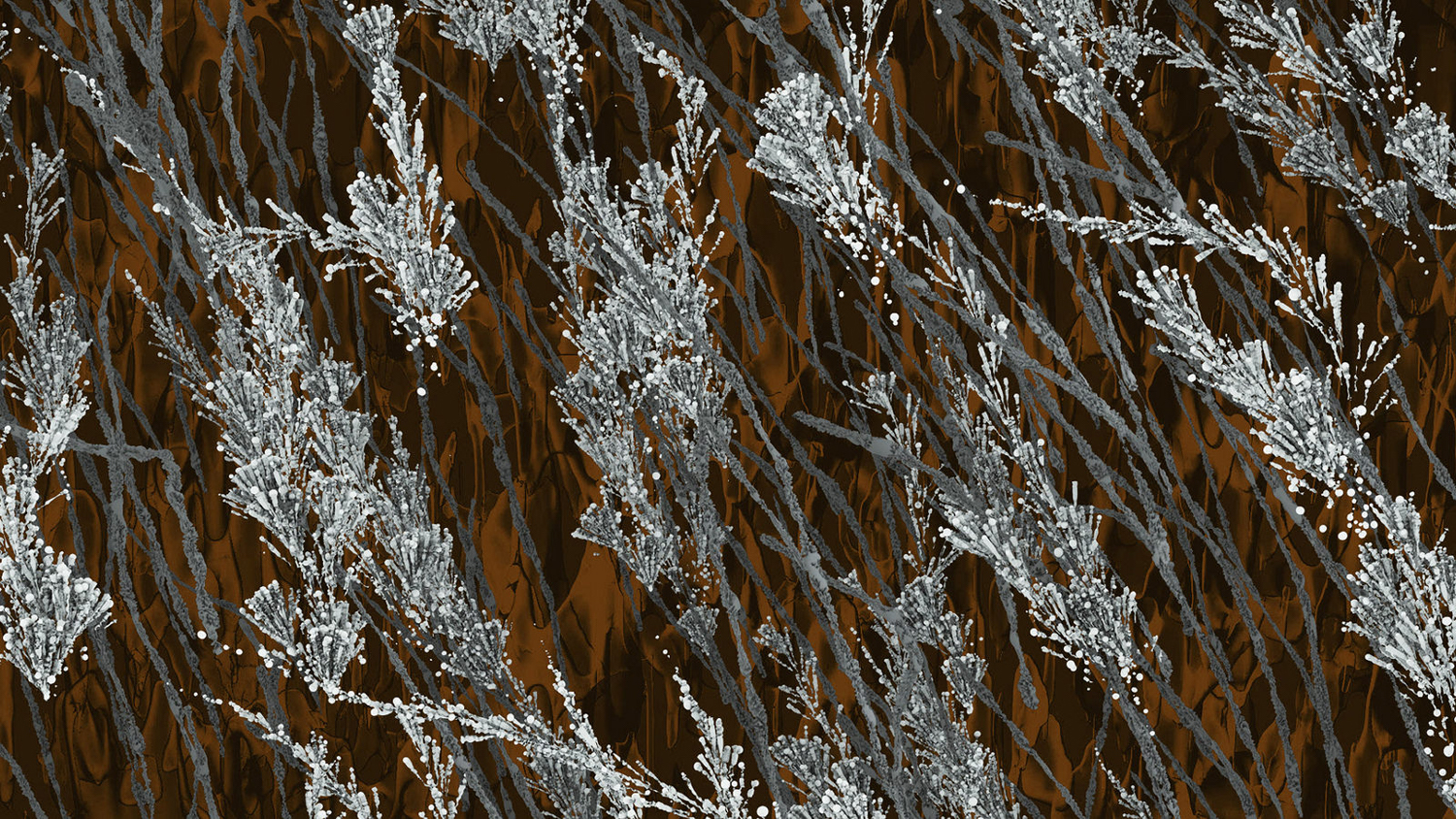



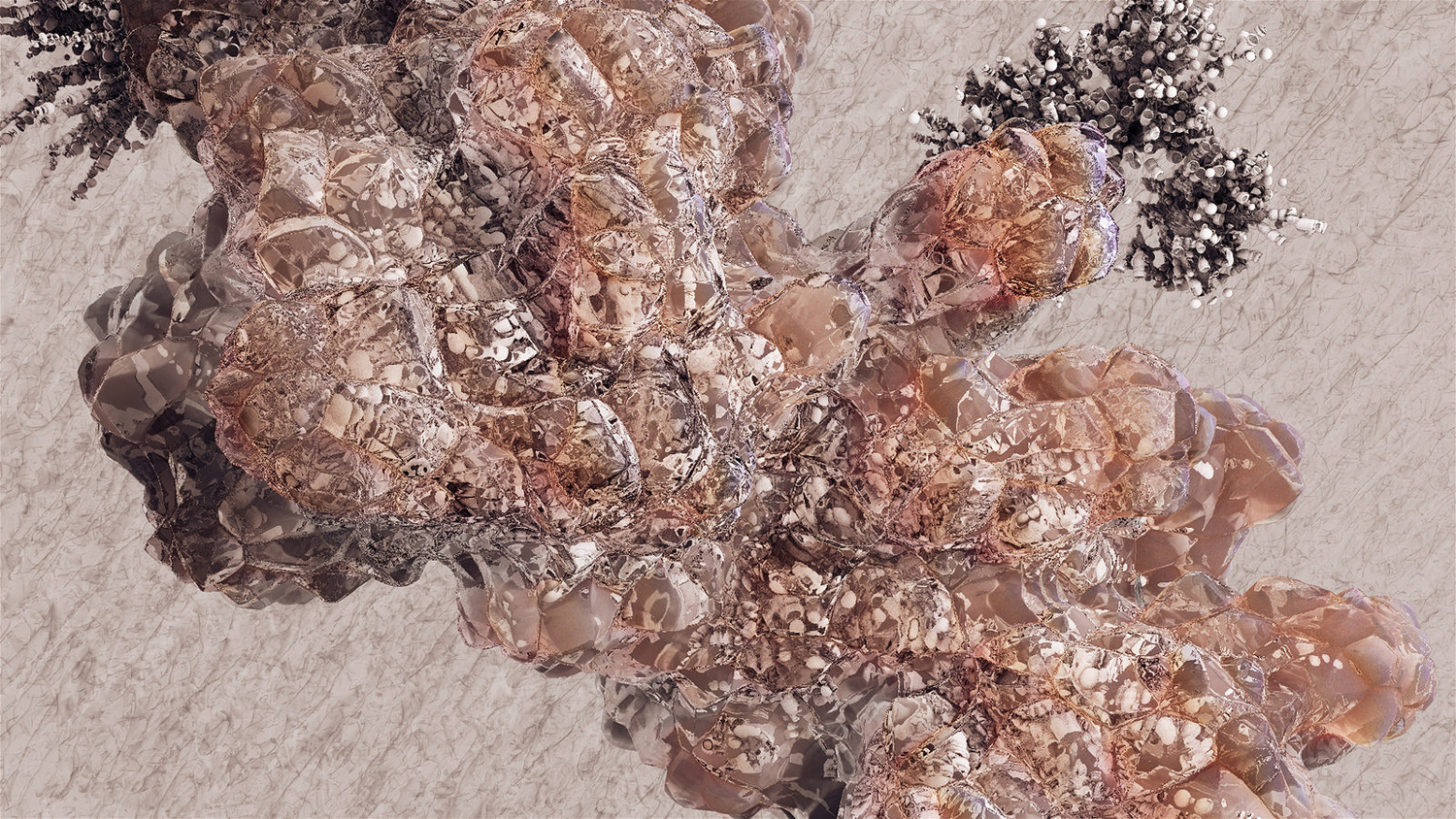
Quantum Fluctuations was developed with input from CERN scientists. It is available in limited edition through Sedition. Click here for more information on Markos Kay.
Related:
